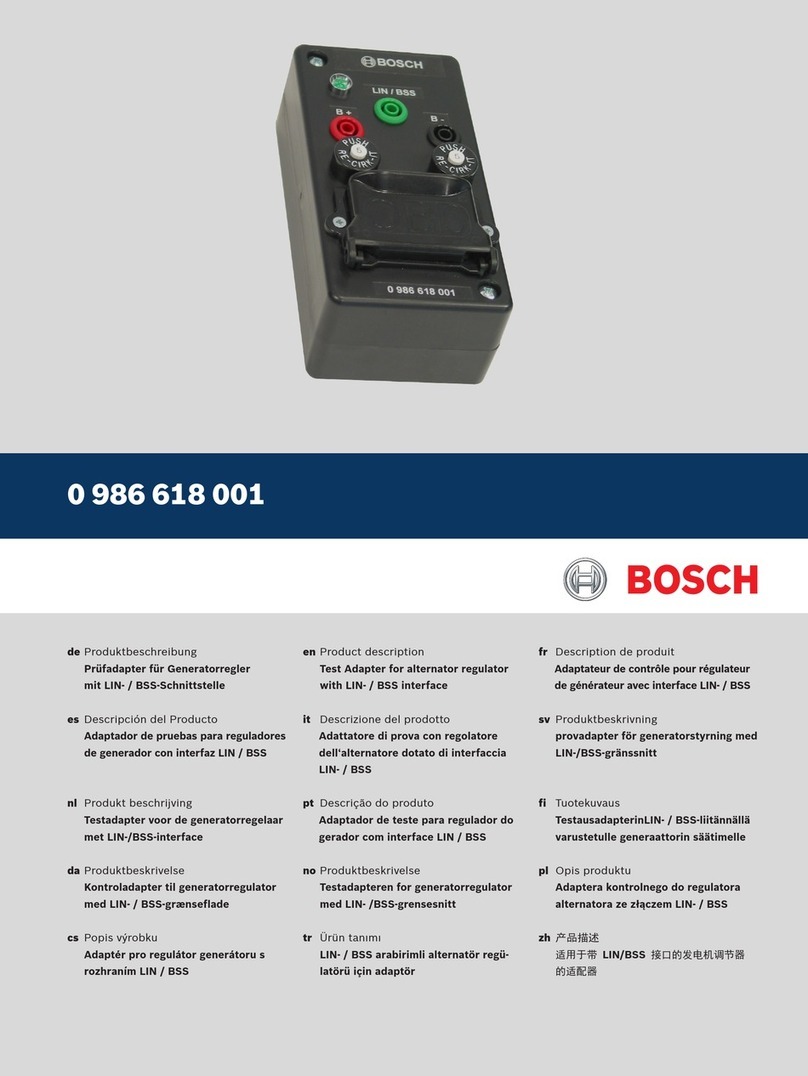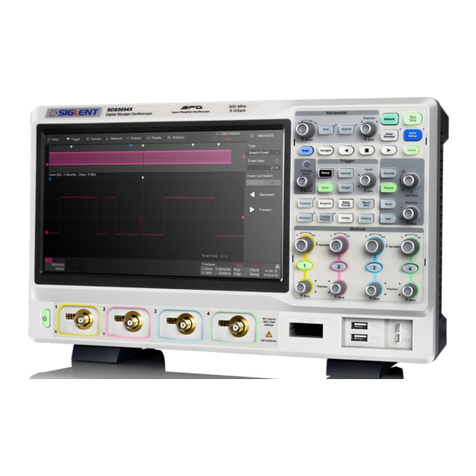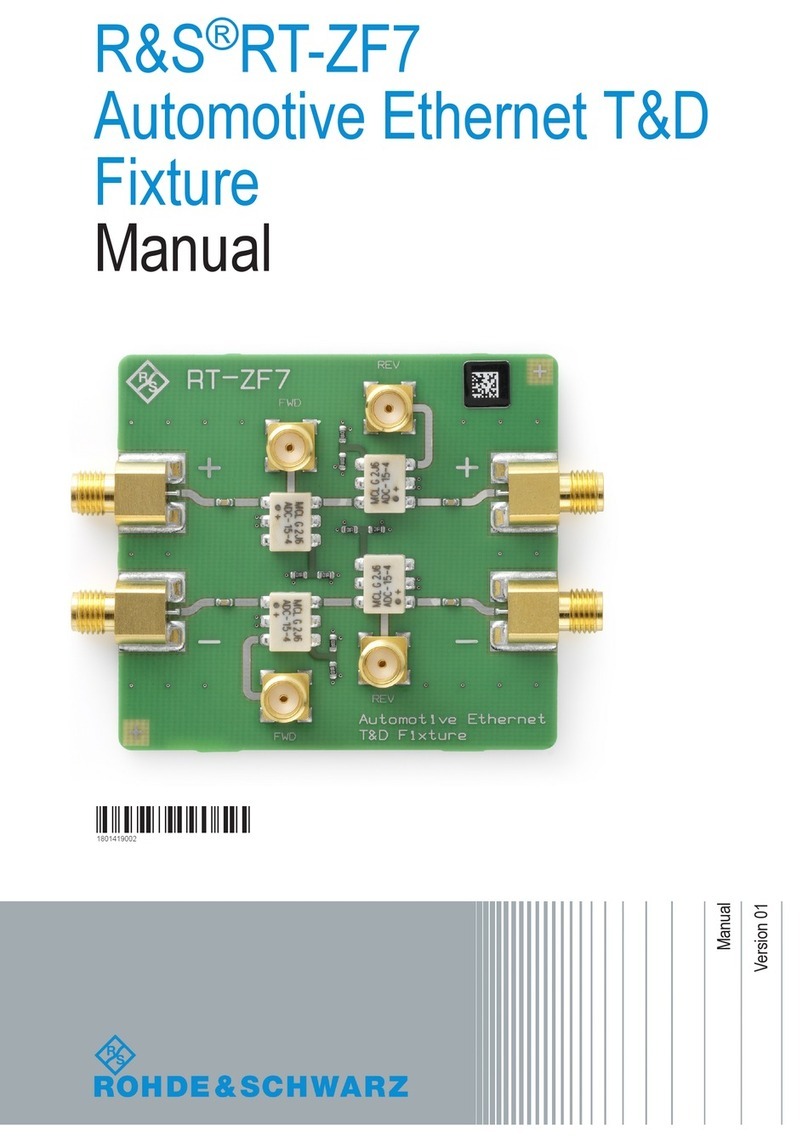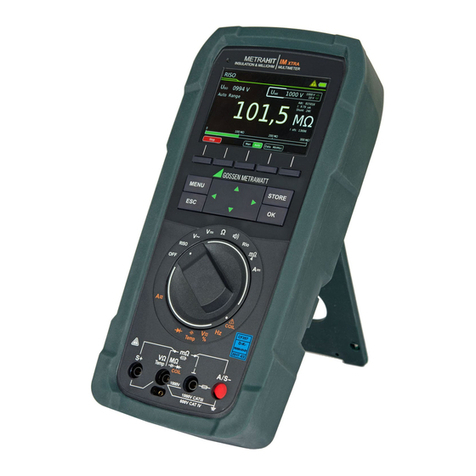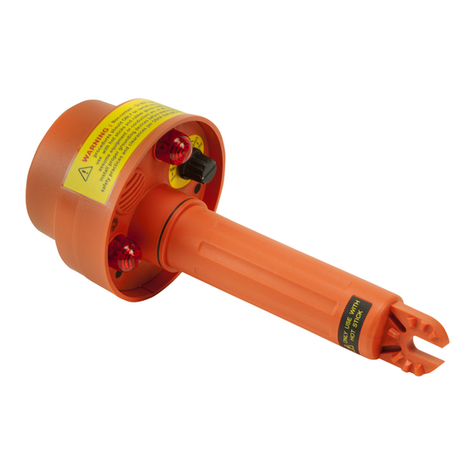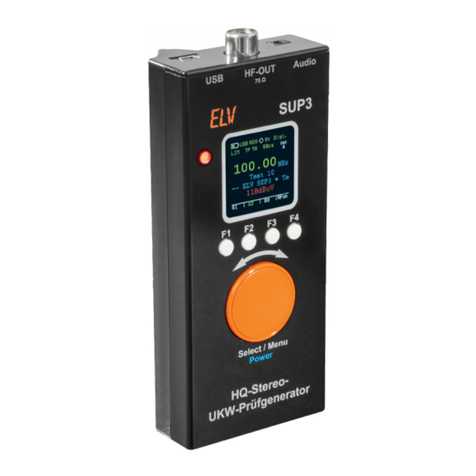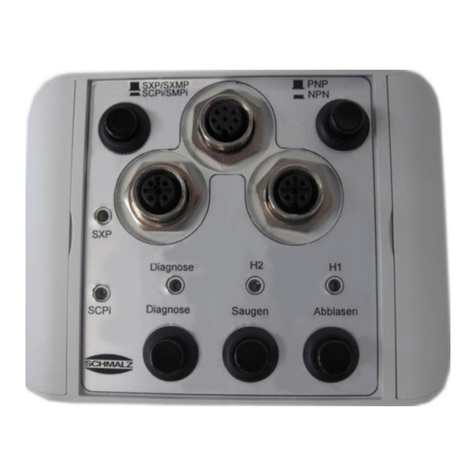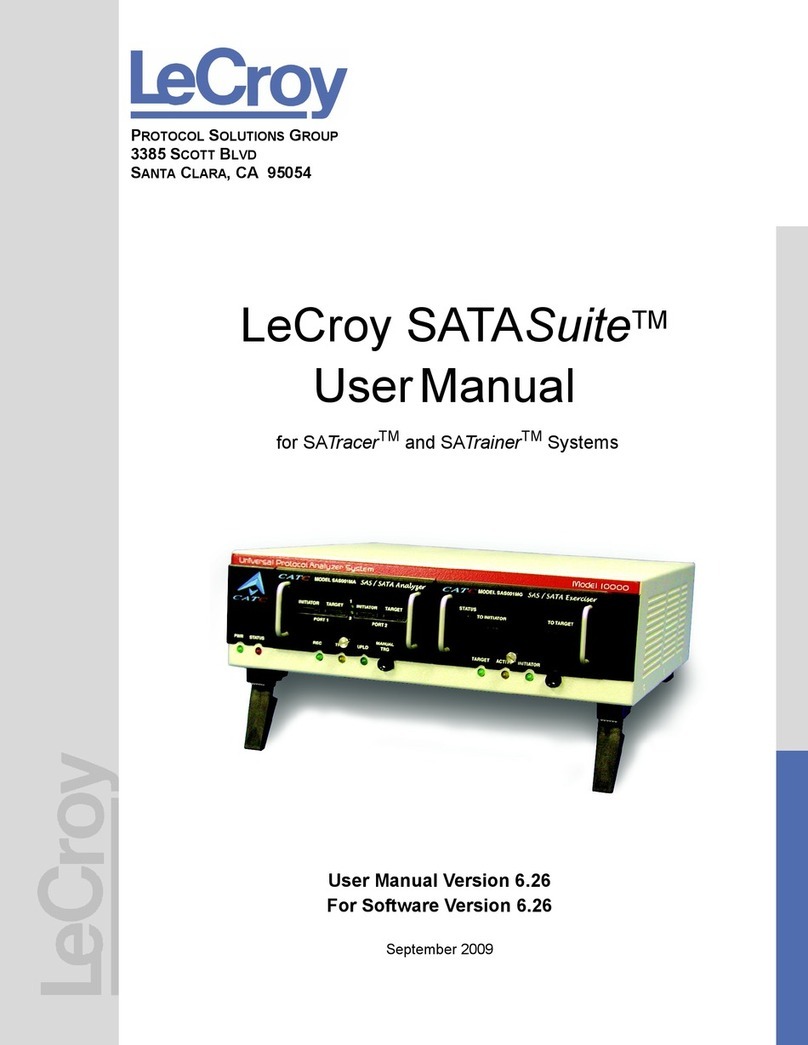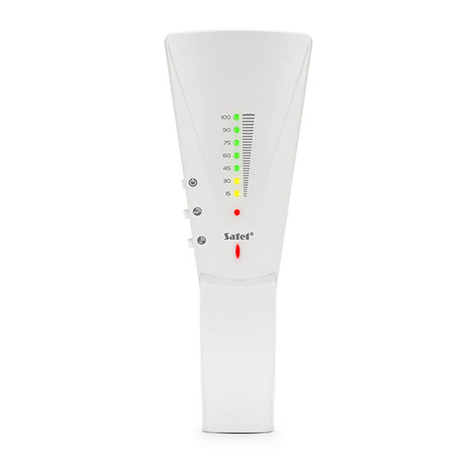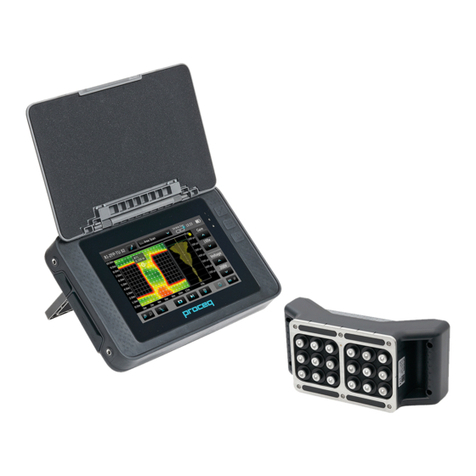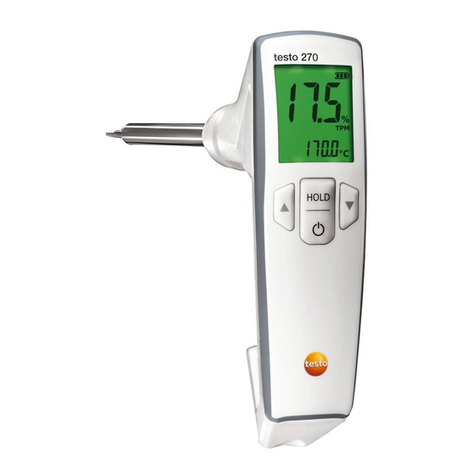GENERAL RADIO COMPANY I559-B User manual

t
r
openanilc lnsrnucnoNs
tl.
Ii
rll
\1
TYPE I559-B
MICROPHONE
RECIPROCITY CALIBRATOR
GENERAL
A
RADIO COMPANY

bprnanNc lNsrRucnoNs
TYPE I559-B
MICROPHONE
RECIPROCITY CALIBRATOR
Form 1559-01'10-A
July,1965
{t aw
wtVot'a Q
Copyright 1965 by General Radio Company
West Concord, Massachusetrs, U.S.A.
GENERAL RADIO COMPAN
WEST CONCORD, MASSACHUSETTS, USA

TABL ECONTENTS
Section 1' INTRODUCTION'
1.1 PurPose . .
L.2 Description'
1.3 Accessories Required
Section 2. OPERATING PROCEDURE
2.I Preliminary Control Settings '
2'2 Piezoelectric Microphone Calibration
2.3 Calibration of W E 640AAandB a K4131
MicroPhones
2.4 Precision Accoustic Source
2.5 Comparison With Standard Microphone
2.6 Sound-Level Calibrator'
2'7 CalibrJion of Type 1565-A Sound-Level Meter
anO fype 1560-P40K Microphone Preamplifier
2.8 MicroPhone ResPonses '
2.9 Ambient Noise Level
2.10 Deviations in Microphone Calibration
Section 3. PRINCIPLES OF OPERATION
3.1 PrinciPle of ReciProcitY
3,2 Microphone Calibration by the Reciprocity
Technique
3'3 The Auxiliary Transducer''
g.4 Ratio and Product of Sensitivities
3'5 CouPling ImPedance' Z4
3.6 Current SamPler ' '.
g.7 Resistive-Insert Technique
3.8 The Analog ComPuter
3.g Explanatio:n of Calibration Procedure '
Section 4. SERVICE AND MAINTENANCE'
4.I WarrantY
4.2 Service .
4.3 Removal of Instrument From Cabinet
4.4 Trouble-Shooting '
4.5 Resistance Measurements '
Appendix I
L4
T6
L6
I
1
I
J
4
4
6
9
t0
11
11
11
12
13
T7
18
18
20
20
2l
22
22
25
25
25
26
26
26
27
30
Appendix 2

SPECIFICATIONS
I'tICR,OPHONE CAIIBRATOR
Ronse:-Direct -reading for microphone sensitivities between
-35 dB and -75 dB re I Y /pbar.
Fre^quency Ronge: 20 c/s to 6 kc/s direct reading, with correetions
to 8 kc,/s.
Accurccy: 10.2 dB + (0.1 db X_fleque-ngy -lg kc) up to 2.5 kc/s.
Trpn 1560-PB and Tipp ts60-p4: io.Z"aS at""i z.ff.c7-'io
7 kc/s.
Typr 156O-P5 and Tvpn 1b60-p6 | t0.Z dB above 2.8 kc/s to
'Western Electric 640-4A I -O. l.Ur,- ai.u"t -."aiirrgl
or equivalent J with coire"iio", to S k.7?l
lype t55t.Ptt: +0.7 dB above 2.5 kc/s to b kc/s.
PRECISION ACOUSTICA1 SOURCE
Frequency Ronge: 20 c/s to Z kc/s.
Output: 92 dB re 0.0002 pbar for excitation of 50 V.
Accurocy: At 92 dB, +0.1 dB f error in determining microphone
sensitivity.
SOUND.IEVEI CATTBRATOR
Frequency Rcnge: 20 c/s to 2.8 kc/s.
Output: 92 dB re 0.0002 pbar for excitation of 50 V.
Accurocy: +0.7 dB at standard atmospheric pressure.
GENER.At
Mcximum Sofe lnput Vohoge: S0 V behind 600 O.
ACCESSORTES
Required: Generator anddetector. Generator to supply 5 volts
or more into a 2000-pF load, and 2.5 V or more into a OfftlO toaa.
.l,ower voltage can be used,rvith a resul.tant lowering of signal_io_
ambient-noise ratio. The - Ty^pr_ _t qo+.B _Be,atF;;4"*"cf A"dio
Generator, the Tvpn t2t0-C Unit-n-COJritt ti., "id--t'iri'-
Tv-pr_t3tb-A Audio Oscillaio"-u.e fu;m]iint"ed. The Tvpn
1551-8 or -C Sound-Level Meter is recomme;a;al;; tfre aitecio..
Supplied: Trpn 27rt-NP P_atch Cord and an extension cable for
connection to generator and detector; and adaptors for recioroc_
lty^_elg comparison calibration_ of the Typp l560_pb, ivpn
1560-P6, and Western Electric 640-AA o. bqulvale"i-l..oirfr""ur.
IiECHANICAI DATA: Ftip-Tilt Cobtnet
*o*, Width Heisht Depth Net Shinnino
Weight Weisht"
in ?nn1, in tntn in n1,nx Ib kg lb ks
Portable lO 2SS I2OS 7V2 190 13 622 t0
Ra,clc 19 185 1OV2 27O SI r 30 14 6.5 29 13.5
t Bebiod panel.
U.S. Patent No. 2,966,257.
General Radio Experimentet reference: Vol 37, No. 4, 5, April-May L963.

Figure l-1. Type 1559-B Microphone Reciprocify Cqlibrotor.

INTRODUCTION
SEC"ION I
INTRODUCTION
l.l PURPOSE.
The Type 1559'8 Microphone Reciprocity Calibrator (Figure 1) can be
used ro calibrate microphones whose sensitivity is in the range from '75 dB
i" -l: aA re f volt/prbar. This inscrument will calibrate General Radio Types
UeO-p!,'P3,and'P4Microphonesand,withtheadaptorsupplied'theTypes
feO-p> and -P6 Microphones' In addition, it includes igtl-t::t permitting a
primary calibration to be perfotmed on w E 6404A' B & K 4I3L' M R103' and
other condenser microphones of this type' Because the National Bureau of
Standards also uses th" ...ip,ocity method to calibrate these microphones,
thereisnowadirectlinkbetweenNBsandthisnewversionoftheGRMicro.
phoneReciprocityCalibrator.Thehighaccuracyoftheinstrumentmakesit
suitable for standardization measurements, while its ease of operation makes
it useful for daily checks on sensitivity'
Theinstrumentcanalsobeusedasasoufceofconstantacoustlcout.
Putoverawidefrequencyrange'tomakerapidcalibrationchecksonmicro.
pion." and sound-lerr"l ,"t"r", or ro ser rhe reference level of analyzing
systems.
I.2 DESCRIPTION.
l.2.lGENERAL.Thereciprocitycalibratorincludesthecircuitandthestruc.
ture required for the .to".d-.oopler (cylindrical-cavity) reciprocity calibra-
tion procedure, which is widely recognized as the preferred method of per-
forming the absolute calibration of laboratory standard microphones' The

TYPE 1559.8 MICROPHONE RECIPROCITY CALIBRATOR
instrument also includes an analog computer, which performs the calculations
necessary to determine microphone sensitivity. The reversible transducer
necessary for the calibration procedure is the cartridge of a Type I560'P3
PZT Microphone which is built into the coupler. The auxiliary transducer is a
PZT cylinder, which forms the cylindrical wall of the coupler. The insert
voltage is varied in 10-dB steps, to extend the calibration range while main'
taining high resolution. The coupler has a volume of. L7.74 cubic centimeters
and is designed to yield the random-incidence resPonse of the microphone
over an extended range without the use of helium.
The PZT cylinder used in che reciprocity calibration also serves as a
stable acoustic source when the instrumentis usedas a sound-levelcalibrator.
A merer, calibrated in terms of the sound-pressure level produced, indicates
the absolute value of the signal applied to the PZT cylinder.
I.2.2 CONTROLS AND CONNECTORS. Table 1 liscs the controls and con-
connectors on the panel of the Type 1559-B Microphone Reciprocity Cali-
brator.
1.2.3 ACCESSORIES SUPPLIED. Supplied with the reciprocity calibrator are
aType 274-NP Patch Cord, a 30-inch output cable for connection to the sound-
level meter, and adaptors for WE 64OAA-type microphones, Type 1560-P5 Mi-
crophone, and Type 1560-P6 Microphone Assembly.
TABLE I
CONT RO LS AND CONN ECTOR S
Fis. 1-11
R"l I
Type Futtction
2
)
INPUT
92DB-84DB
Microphone coonector
Tran sfer-function switch
(R,EAD.ADJ)
SENSITIVITY LEVEL
MICROPHONE CUR.
RENT
OUTPUT TO SLM
SENSITIVITY LEVEL
Slide pins (2)
Phillips-head screws (4)
Binding post pair
3-position toggle switch
3-terminal Cannon Type
XLR locking connector
9-position selector switch
Continuous rotary control
Continuous rotary control
3-terminal Cannon Type
XLR locking connector
4-position selector switch
Input connection from oscil-
lator to Type f559-8,
Selects $eter range.
Receives microphone to be
calibrated.
Sets necessary electrical
transfers.
Adjusts value of resistance
attenuato!.
Controls level of driving cur
rent of reversible transducer.
Output connection to sound-
level meter.
Sets insert voltage level.
Lock the cabinetin the cover.
Lock the insuument in the
cabinet.
8
9
10

INTRODUCTION
1.2.4 CARRYING CASE. The Type L559'B is mounted in a General Radio
Flip-Tilt case. The captive protective cover serves as a mounting base when
the instrument is in use. The friction of the rubber seal keeps the instrument
at any convenient angle, from horizontal to vertical. The cables and instruc-
tion book are carried in the cover, in a protective polyurethane compartment.
I.3 ACCESSORIES REQUIRED.
1.3. I OSCILLATOR. An audio oscillator is required to drive the Type L559'B
Microphone Reciprocity Calibrator. Ideally, this oscillator should have an
output impedance of 600 ohms and should be able to deliver one watt into a
600-ohm load. The Type fl04-B Beat-Frequency Audio Generator fufills these
requirements and, in addition, is readily coupled to a recorder such as the
Type I521-B Graphic Level Recorder. The Type 1310-A Oscillator is also
recommended. Although the Type I559-B Microphone Reciprocity Calibrator
is designed to use a GdB change in output voltage when a 600-ohm source is
matched and is effectively unloaded, oscillators of other impedances can be
used. Two such oscillators are the Type I3IL-A Audio Oscillator, which
supplies 11 fixed frequencies between 50 and 10,000 c/ s, and the Type L2L0'C
Unit R-C Oscillator, which is continuously adjustable over the audio spectrum.
The Type L3I7-A should be used on the 30 v output position and the Type
I2I0-C on the 0-7 v output position. The need for the 600-ohm generator
impedance is most evident when the Type 1559-8 Microphone Reciprocity
Calibrator is used for sound-level calibrations. The output impedance of both
the Type L3II-A Audio Oscillator and the Type L2L0'C Unit R-C Oscillator
can be made equal to 600 ohms by adjustment of their resPective outPut-
level controls or by the addition of series resistance.
I.3.2 DETECTOR. The detector required to measrue the output signals of the
Type 1559-B Microphone Reciprocity Calibrator should have an input imped-
ance of at least 5 megohms and should be capable of measuring a signal of
several millivolts with a signal-to-noise ratio of at least 20 dB. In addition,
the detector should have a scale suitable for observing l'percent changes
in signal level. The detector can be a Type I551'C Sound-Level Meter, a
Type 1558-A Octave-Band Noise Analyzer, or a Type L564'A Sound and Vibra-
tion Analyzer. One of these is usually the instrument whose microphone is to
be calibrated.

TYPE 1559.8 MICROPHONE RECIPROCITY CALIBRATOR
BAROMETEN PRESSURE
CORRECTED TO
SEA LEVEL
INCHES
OF
MERCURY
3t
ALTITUDE OF STATION
IN
FEET ABOVE SEA LEVEL
BAROMETRIC PRESSURE
AT
STATION
MILLIMETERS
OF
MERCURY MILLIBARS
700
MILLIBARS
r o50
30
:"
2A
27
26
z5
24
23
zt
I OOOO
9000
8000
7000
6000
5000
zrooo
3000
2000
r 000
o
-tooo
I OOOO
9000
8000
7000
6000
5000
4000
3000
2000
r ooo
o
-t o00
Figure 2-l. Nomogroph for opplying oltitude correction to boro'
melric ptessure. Ploce stroight'edge ocross ProPer points on
center ond left-hond scoles ond reod ocluol pressure on righf'
hond scole. See Appendix 2 lot oltitudes obove seo level for
mony cities in fhe U.S. ond Conodo.

OPERATING PROCEDURE
SECTrcN 2
OPERATING PROCEDURE
2.I PRELIMINARY CONTROL SETTINGS.
2. l.l METER-ZERO CHECK.vith the instrument off' set the meter pointer to
zeto,ifnecessary'bymeansofthescrewdriveradjustmentonthemeterface.
2.l.2BARoMETRlcPRESSUREcoMPENsATloN.Formaximumaccuracy'
SCt thc BAROMETRIC PRESSURE MILLIBARS CONTTOI tO iNdiCAtC thc ACTUAI
barometric Pressure at your location'
Thepressure"gioenbytheUnitedStatesWeatherBureauandbyvarious
flighr facilities are ."orr".t"d pressures, i.e., pressures referred to sea level'
Most barometers are similarly calibrated to read Pressures corrected to sea
level. The actual barometric pressure can be specifically requested of your
local weather sration, or you.un.orr.., the published barometric reading for
yourownlocation.Thiscorrectionis4Junctionofaltitude,temperature,and
pressure, but the principal factor is ttb altitude correction of one inch of
'.,..,ryper1000f.et.bo,,esealevel.Figure2-lincludesanaltitudecor-
rection chart and a conversion nomograph for inches of mercury to millibars'
while the pressure set on the BAROMETRIC PRESSURE indicator should be
reasonablyaccurate,anerrorofafewmillibarswillnotgteatlyaffectthe
accuracy of measuremenr. An effor of 34 millibars (one inch of mercury) in
barometric pressure will cause an error of approximately 0.15 dB in micro-
phone calibrations and 0-3 dB in sound-level calibrations'

@TYPE ls59-B MICROPHONE RECIPROCITY CALIBRATOR
2.2 PrcZOEL ECTRIC MICROPHON E CAL I BRATION.
(Generol Rodio Types I560-Pl, 'P3, ond -P5 Microphones ond Types
1560-P4 ond -P6 Microphone Assemblies')
NOTE
On microphones manufactured prior to January, 1961, pin
No. 1 is connected to pin No. 2. This connection must
be removed before the microphone is calibrated by che
Type 1559-8. Remove the screw from the connector and
pull out the pins. Cut the jumper between pin No' 1 and
pin No. 2 and reassemble the connector.
2.2.1 CONNECTION OF GENERATOR, DETECTOR, AND MICROPHONE.
a. Connect an oscillator ro rhe INPUT connecror and a sound-level
meter to the OUTPUT TO SLM connector' using the cables supplied'
b. Set the meter range switch to 92 dB.
c. Set the MICROPHONE CURRENT control to NORMAL.
d. Set the transfer function switch to ADJ 1.
e. Adjust the oscillator ourpur control for less than full-scale deflec-
tion of the INPUT LEVEL IN DB meter.
f. carefully place the microphone to be calibrated in the coupler (see
CAUTION below) and lock it in place by moving the slider to the left. No
adaptor is needed for the Types l56O-P3 &-P4Microphones, but an Adaptor
sleeve, No. 1559-6080, is required with the Types 1560-P5 and -P6 Micro-
phones. Then connect the microphone to the instrument, using the microphone
connector attached to the Panel.
CAUTION
To ovoid domoge to fhe microphone, it must be inseried
into ond removed from the coupler slowly enough to ollow
the pressure in the coupler to equolize wiih thor of the
envi ronmenl.
2.2.2 SENSITlVITY-LEVEL SETTING.
The SENSITIVITY LEVEL adjusts the insert voltage applied to the un-
known microphone, to permit direct calibration of microphones of various sen-
sitivities. Set the SENSITMTY LEVEL to -10 DB, NORMAL, *10 DB, or
+20 DB, depending uPon the expected microphone sensitivity. Add this set-
ting algebraically to the reading of the large SENSITIVITY LEVEL dial to
determine the microphone sensitivity. Use the NORMAL position for the Gen-
eral Radio Types L560-P!, -P3, and -P5 Microphones and Types 1560-P4 and
-P6 Microphone Assemblies.
6

OPERATING PROCEDURE
2.2.3 CALIBRATION PROCEDURE.
a. Set the transfer function switch
LEVEL knob until the dot on the larget
metric pressrue in millibars.
to START. Turn the SENSITIVITY
dial is opposite the actual baro'
b. Set rhe function switch to READ 1. Adjust the sound'level meter for
an on-scale indication and note the reading.
c. ser the funcrion swirch to ADJ 1. Twn the SENSITIVITY LEVEL
knob until the sound-level meter indicates che value noted in steP b.
d. Ser the function switch ro READ 2. Adjust the sound-level meter for
an on.scale indication and note the reading.
e. Set the function switch to ADJ 2. Turn the SENSITIVITY LEVEL
knob until the sound-level merer indicates the value noted in steP d.
t. Set the function switch to READ l. Adjust the sound'level meter for
an on-scale indication and note the reading.
g. Set the function switch to ADJ 3.1 Turn the SENSITIVITY LEVEL
knob until the sound-Ievel merer indicates the value noted in step f.
h. set the function switch to READ 4. Adjust the sound-level meter for
an on.scale indication and note the reading.
i. Set the function switch to ADJ 4. Turn the SENSITIVITY LEVEL
knob until the sound-ievel merer indicates the value noted in step h.
j. Read the microphone sensitiviry2 in dB re 1 volt/ ltbar on the large
SENSITIVITY LEVEL dial with the added correction of the setting of the SEN-
SITIVITY LEVEL knob (refer to paragraph L2-2)-
2.2.4 READING THE LARGE SENSITIVITY LEVEL DIAL.
when the instructions in step i of the calibration procedure (above) are
followed, the sensitivity of some microphones may cause the SENSITIVITY
LEVEL dial to pass rhrough the blank portion of the dial (u }uP between -54.6
and -63.4). Vhen this occurs, the microphone sensitivity can be correctly deter-
mined by the following straightforward procedure:
when the dial is rursed through the gap in the engraving (refer to Figure
2-2) continue the calibration with the same progression of numbers as that in
use before the gap was enrered. Referring to the outer numbers inthefigure,
with a counterclockwise rotation of the dial the center of the gaP becomes
-54.5 and. the major divisions that follow are '54.0, '53.5, '53'0, etc' Vith a
clockwise roration ofthe dial the center of the gap becomes'63.5 and the
major d.ivisions that follow are -64,'64.5, etc. TabIe 2lists the microphone
sensitivities involved and indicates the proper interpretation of the dial
readings.
llf unable to set the sound-level meter to the reading of step f, turn the MICROPHONE CUR-
RENT control counterclockwise and repeat step f.
2Even though the calibration is a presswe calibration, the coupler has been adjusted so that
the indica|"d sensitivity is the random-incidence (diffusefield) sensitivitv.

TYPE I559-B MICROPHONE RECIPROCITY CALIBRATOR
Actaal Micro-
phone Sensi-
tiuity in dB
re 1V/ 1,tbar
-62.5
-62.5
-61.0
-63.5
-64.0
-b4.>
-65.0
-st <
-12.5
-53.0
-53.'
-54.0
-54.t
- 55.0
-42.1
-42.5
-43.0
-43.5
-44.O
- 44.5
-45.0
-32.5
-33.0
-33.5
-34-0
-34.5
-3t.0
+10 dB
NORMAL
NORMAL
NORMAL
NORMAL
NORMAL
NORMAL
+20 dB
+10 dB
+10 dB
+10 dB
+10 dB
+10 dB
+10 dB
+20 dB
+20 dB
+20 dB
+20 dB
+20 dB
+20 dB
-62.5
+ -61.5
+ -62.0
+-62.5
+-61.0
+J-6).5
L-5 4.5
-55.0
TABLE 2
Microphone
S ensitiuity
(SENSITIVITY
Setting of LEVEL Dial
SENSIII'/yITy SENSITIyITY LEVEL DIAL Plus Suitch
LEVEL Number Sbould be read Readings) in
suitcb Displayed ds dBre LV/pbar
NORMAL -62.5 -62.5 -62.5
- r0 dB *-61.5 -52.1 -62.5
- 10 dB +-62.0 -53.0 -61.0
- 10 dB *-6Zt -53.5 -61.5
- r0 dB *-63.a -54.0 -64.0
c$.5
- t0 dB **) -. - -54.5 -64.5
G54.5
- 10 dB -55.0 -55.0 -65.0
-62.5
* -6 1.5
*-62.0
*-62,5
* -63.0
**163'5
r-)4. )
- 55.0
-62.5
-52.t
-5i.0
-53.5
-54.0
-54.5
-55.0
-62.5
-52.5
-51.0
-5).5
-54.0
-57 5
-52.5
-t3.0
-53.1
-14.0
-54.5
-5 t.0
-42.5
-42.5
_4J.0
-43.5
-44.0
-44.>
-41.0
-32.5
-)1.0
-33.5
-)4.0
-34.1
-35.0
x -6r.5
*-62.0
*-62.5
+-63.0
*+63.5
c54.5
-55
-52.5
-t3.0
-53.5
-54.0
-54.5
*Dial passes through gap from '54.6 to -63.4 in adjustment 4.
**Dial is in center of gap ftom -54.6 to -63.4 aftet adjustment 4.

OPERATING PROCEDURE
Figure 2-2. Port of the SENSI'
TIVITY LEVEL diol, showing the
progression o{ numbers through the
gop, for counierclockwise rototion.
2.2.5 USE OF MICROPHONE SENSITIVITY.
If the rneasured sensitivity of the microphone is the same as its initial
value, the calibration of the associated instrument (sound'level meter, octave-
band analyzer, etc.) need not be changed. However, if the measured sensitivity
is different, the associated instrument must be recalibrated. Refer to the ap-
propriate paragraph in the Operating Instructions for the associated instrument:
paragraph 3.8 for the Type 155 t-B Sound-Level Meter, ParagraPh 4'8 for the
iype 1551-C Sound-Level Meter, paragraph 4.4 tor the Type 1558 octave-Band
Noise Analyzet, and pangraph 2.3 fot the Type 1564-A Sound and Vibration
Analyzer.
2.3 CALIBRATION OF WE 640AA ond B & K 4l3l MICROPHONES'
NOTE
The following instructions apply for the calibration of
either microphone, excePt that a No' DB-O 111 B & K
Coupler-Adaptor is required for calibration of the B & K
4131 MicroPhone.
A preamplifier is required to supply a polarizing voltaSe for condenser
microphones and to give a lower impedance. The GR Type 155l-P 1 Condenser
Microphone Systeml is acceptable for this use.
a. Insert the Type L559-2220 Adaptor Unit into the coupler opening on
the panel of the Type 1559-8 and lock it in place by sliding the clamp onto
irs rim.
b. Insert the banana pin of the Type L559-22L0 Adaptor Assembly into
the scroll of the clamping spring on rhe Type 1559-8. Connect the female end
of the audio connector to the output of the Type 155l-P1 Condenser Micro-
phone System' and connect the male end of the audio connector to the micro-
phone on the Type L559'8.
Tffik,thepolarizingvo1tagemustbeaccurateIymeasuted.Anaccurate,high.
impedance voltmeter cuni. os.dio *"^Jor" the polarizing volt.age from c.athode to ground of
;ilt;" 155l-pL a ".rr""ti.n.r -2,olt., for grid to cathode bias, should be applied to the
reading.
2O,h., -pr.u.plifiers can be used if they include a provision for insening a voltage between
the miirophone case and the preamplifier ground'
d
N
it
COUNTERCLOCKWISE OIAL
ROTATION THROUGH GAP

TYPE I559.8 MICROPHONE RECIPROCITY CALIBRATOR
c. Extend the center terminal of the W E 640AA Microphone by means
of the adaptor contact providedl. Screw the plastic adaptor (supplied) into the
W E 640AA Microphone, and screw the larter onro rhe Type 1551-P1-25 Micro-
phone Base. Connect the base to the condenser microphone system, turn the
switch to ON, and set the meter to 100; the polarizing voltage of the micro-
phone is now 200 volts. (Refer to footnote 1, page 9.) The ground return for the
microphone will be through the Type 1559-2210 Adaptor Assembly. Therefore
do not attempt to use the microphone when it is not connected to the Type
1559'8 Calibrator.
d. Remove rhe grid from the W E 640AA Microphone and slouly insert
the microphone into the adaptor unit.
Because of the microphone polarizing voltage and capaciror leakage, ir
is necessary to charge the stray capacitances of the calibrator, as follows:
a. Set the Transfer Function Switch (TFS) on the Type 1559-8 to
START and allow the Type 155 l-P1 Condenser Microphone System to charge
until the meter indicates 100.
b. Set the TFS to READ l and again allow the Type 1551-P1to charge
to 100 on the meter.
c. Repeat this procedure with the TFS set to ADJ 1. Proceed around
the switch until all positions are similady charged.
d. Set the SENSITIVITY LEVEL switch to the +10 dB position. Pro-
ceed with the calibration of the W E 640AA Microphone by following the in-
structions on the panel of the Type I559-B Microphone Reciprocity Cali-
brator or those given in paragraph 2.2.2.
Although the microphone is calibrated with the "grid off," the adaptor
unit gives the correct "grid on" random-incidence response, for normal use
of the microphone.
2.4 PRECTSTON ACCOUSTTC SOURCE.
In this use of the Type 1559-8, the determined sensitivity of che micro-
phone is used to set the sound-pressure level in the coupler with an accuracy
of t(0.2 dB + the accuracy of determining the microphone sensitivity). This
accurately determined sound-pressure level can then be used to calibrate a
sound-level meter or a sound analyzing system. Proceed as follows:
a. Calibrate the microphone to be used as outlined in paragraph 2,2.
b. With the same connections as in paragraph 2.2, turn the function
switch to ADJ 3. Set the SENSITIVITY LEVEL smaller dial to the micro-
phone sensitivity determined in step a.
c. Adjust the oscillator output control for a full-scale deflection of the
INPUT LEVEL IN DB meter. If it is not possible to set the meter to full-
scale, set it for the maximum reading possible and note the reading.
d. Adjust the sound-level meter for an on-scale indication and note the
reading.
I An adaptor contact is also provided for the B g.K 4I3l Microphone.

OPERATING PROCEDURE
e. Set the function switch to READ l' Adiust the MICROPHONE CUR-
RENT knob until the sound-level meter indicates the value noted in step d'
If necessary, the generator outPut voltage may be adjusted also'
f.ConnectthemicrophonedirectlytotheSound.levelmeter.
g. Adjust the gain of ihe sound-level meter so that its dB reading equals
that noted on the INPUT LEVEL IN DB meter in steP c'
2.5 COMPARTSON WITH STANDARD MICROPHONE.
The calibrarions performed with the Type L559'B Microphone Recipro-
city calibraror can be compared to the reciprocity calibrations performed by
the National Bureau of Standards on the W E 640AA Microphone' There is now
a direct traceability between the NBS and General Radio reciprocity cali'
brations.
2.6 SOUND.LEVEL CALIBRATOR.
The PZT cylinder used as the auxiliary transducer in the reciProcity
calibration procedure can be used as a stable acoustic sotuce for rapid cali-
brationsof microphones, sound-level meters, and analyzing systems at fre-
quencies between 10 and 2500 c/s. The PZT cylinder produces a constant
oorprra over this frequency range' The range is limited because' when a sound
"orr.." is used to produte a calibrated sound field, the sound source must
have a flar and stable oulpur. For a microphone calibration, the sound source
can deviate from a flat respon"e, and the field can vary so long as the sound
pressure levels on the ,ecip.o.ul microphone and the microphone being cali-
brated are the same. The procedure, using the' PZT cylinder, is as follows:
a. set rhe meter switch to 92 dBr and the function switch to READ 1'
b. Insert the microphone in the coupler and connect it directly to the
sound'level meter.
c.Connectanoscillator(orgenerator)totheINPUTconnectorand
adjust the oscillaror output control for a full-scale deflection of the INPUT
LEVEL IN DB merer. If it is not polssible to set the meter to full scale' set
it for the maximum reading possible'
d. The sound level aPPlied to
PUT LEVEL IN DB meter. The value
Figure 2'3 for corrections.
the microphone is indicated on the IN'
given is for atmospheric pressure; see
the frequency range' the inPut
Purposes.
If the oscillator outPut is constant over
to the T)?e I559'B can be swePt for recording
2.7 CALIBRATION OF TYPE I555'A SOUND'LEVEL METER AND TYPE
I55O-P4OK MICROPHON E PREAMPLI FI ER.
The microphones on these instruments cannot be calibrated by the
,..iprJry i".trrique without the use of a microphone base'which permits
t Wh"n t.ing the TvPe 1310-A Oscillator' set the meter switch to 84 dB'
ll

TYPE I559.8 MICROPHONE RECIPROCITY CALIBRATOR
Figure 2-3. Sound-level colibro-
tion outpul versus otnospheric
Pressure.
rhem to be connected to the Type 1559-8. As the units are supplied, there is
no provision for introducing an insert voltage for calibration. Therefore' these
insrruments must be calibrated by using the Type I559'B as either an acous-
ric source, as outlined in paragraph 2.6, or a sound-level calibrator, as out'
lined in paragraph 2.4. Calibration of an auxiliary microphone is needed to
use the Type 1559-B as a sound-level calibrator.
2.8 MICROPHONE RESPONSES.
The frequency respoose of a microphone can be expressed in several
different ways:
a. Pressure Response - the ratio of the open-circuit voltage output to
the value of a pressure variation aPPlied uniformly over the surface of the
diaphragm.
b. Free-Field Response - the ratio of the open-circuit voltage outPut
ro rhe value of the sound Pressure of a plane progressive wave before the
inrroduction of the microphone into the sound field. The direction of incidence
must be specified.
(1) Free-Field Perpendicular Incidence (0"). The direction of Pro-
pagation of the sound wave is perpendicular to the plane of the microphone
diaphragm, and parallel (0 o) to the axis of the microphone (diaphragm normal).
(2) Free-Field Grazing Incidence (90';. The direction of propagation
of the sound wave is parallel to the plane of the microphone diaphragm and
perpendicular (90") to the axis of the microphone (diaphragm normal).
c. Random-Incidence (Diffuse'Field) Response - the ratio of the open'
circuit rms voltage output to the rms value of the sound pressure of a diffuse
12

I I lllr
- I ' PARALLEL
rrffi
rooo 2000
FREOUENCY- c/s
oPERATING PROCEDURE
field (one is which the rms sound pressure is everywhere the same and the
flow of energy i" uu ii'^"tli;t i" ^"qo"lly p'obabte) before the introduction
or tire;;;r;nl!1";on"'. the size of the rvpe 1-s60-P3,("1-",1"t-,tn'n in dia-
meter), all of the above responses are equtl from subsoni:,Squencies to
about 1 kc/s'- Above tkc/s' diffraction "if"t'" cause a variation in the re-
sDonses. $gs Figures'Z'i^'a 2'l for the.relationships between the various
:$i;t;r.," .?rlu**' l' 'ai"""a to give the randoq lggPg=g because a
diffuse field closely approximates the usual e"vironment into which a sound-
l.rr.l-t.,., microPhone is Placed'
2.9 AMBIENT NOISE LEVEL.
To avoid an error in the measluement' the ambient noise level in the
coupler, with the t;t;;P;;;; to.be calibrated in place' should be at least
20 dB below 'r''" uto-"]iit- "ig"ut lt""l' ;;'thttt''i'" signal-to-noise ratio'
follow the procedure outlined in p"rug.uph 2.2.1., set the function switch to
READ 2, a:nd"ot" 'h" reading of the "o'"'d-l"otl meter' Then decrease the
input voltagt 'o '"'o-;;J t";" 'n" '"uai"g of che sound'level meter' This
read.ing should b" ;; F below the first r"eading' If the noise level is too
high, either increase the oscillator outPut (up to 50 volts) or move to a more
quiet location'
1 The usual closed coupler (pressure) calibration takes into accourlt only pressureequalization
leaksthroughth. diuphrugm.Leaks through ,tt. .u"iitlu"Vtuo"t Itotl-off at subsonic frequencres'
:ll
!l i
Y"
i,
:ri
ii
:i
lri
Ii
r1
1,1
l
-4
)
u-6
9
o
u-8
o-to
/, l, ?,4'"'".
t3
Figure 2-4. Corrections to be qdded to {ree'field perpendiculor'
incidence ,"roon'" 'fo' rondom' ond porollel'incidence re'
sponses o{ W E 540A1 ""1 ftt" 1560-P5 Microphones ond
iyp. 1550'P5 Microphone Assemblv'

TYPE I559-B MICROPHONE RECIPROCITY CALIBRATOR
i-#o /al, ?a7'-sc
Figure 2-5. Corrections lo be odded to free-{ield perpendiculor-
incidence response for rondom- ond porollel'incidence re-
sponses of Types 1560-Pl ond -P3 Microphones ond Type
1560-P4 Microphone Assembly.
2.IO DEVIATIONS IN MICROPHONE CALIBRATION.
At frequencies below I kc/ s, the Type 1559'B is a primary absolute
calibrator for theType 1560-P3PZT Microphone, with the error in determining
a microphone sensitivityfixedby(1)the linearityof thepotentiometer (tQ.5%),
(2) the accuracy of measurement of the coupler volume (tL%), and (3) the
capacitance tolerance of the current-samPling capacitor (t0.25%). At fre-
quencies above 1 kc,/s, the "error" in the pressure resPonse due to wave
motion is empirically matched to the correction between the pressure and
50 tOO 2O0 soo rO0O 2OOO 5OOO rOpOO
FREQUENCY IN CYCLES PER SECOND
Figure 2-5. Averoge deviotion of the colibrotion by the Type
1559-B Microphone Reciprocity Colibrotor {rom the lrue rondom
incidence {or the Generol Rodio Type 1550-P5 Microphone ond
Type 1560-P6 Microphone Assembly.
g -4
o -b
+4

OPERATING PROCEDURE
Figwe 2-7. Averoge deviotion of rhe colibrotion by fhe Type
tsig-A Microphone-Reciprocity Colibrotor from the true rondom
incidence {or the W E 640AA Microphone'
too 200 500 lo00 2000
FREOUENCY tN CYCLES PER SECOND
50 loo 200 500 looo 2000
FREQUENCY IN CYCLES PER SECOND
5000 ropoo
5000 to,ooo
tt,
J
lr,
dt
H -o.s
o-t.ozo
Figure 2-8. Averoge devioiion of colibrotion by rhe-Type 1559-B
Microohone Recipiociry colibrotor from the true rondom- incidence
for-ti'; 6";erol hodio'Tvpes 1560'Pl ond'P3 Microphones ond
Type 1560.P4 Microphone Assemlly'
Example: A General Radio Type L56O-P3 PZT Microphone is calibrated at
7 kcis with the Type 1559-8. The determined sensitivity is '57.0 dB re
I voh/ 1tbar. Referring to Figure 2-8, the average deviation is +0.45 dB'
Therefore, the .orr.cted response of the Type 1560-P3 PZT Microphone is
-57.0 dB - 0.45 dB ='57.{J dB.
random responses of the microphone. Thus the instrument is direct reading in
the random-resPonqe alibrated. Figures
Z-e , Z-l *"a Z-g are plots of the average deviation of the matching. These
plots can be used as correcrions appiied to microphone calibrations bythe
Type 1559'8 Microphone Reciprocity Calibrator to increase the accuracy'
t5
Table of contents
Popular Test Equipment manuals by other brands

Agilent Technologies
Agilent Technologies Option H48 Multiport Test Set Z5623A User's and service guide
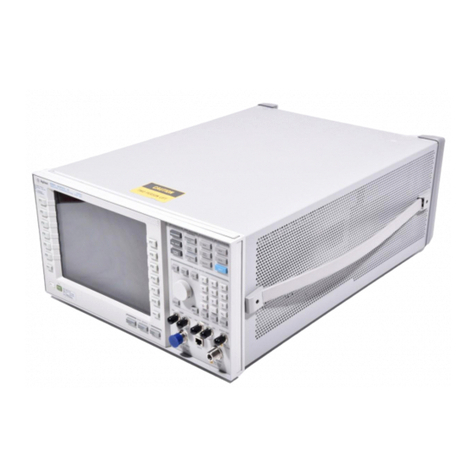
Agilent Technologies
Agilent Technologies 8960 reference guide
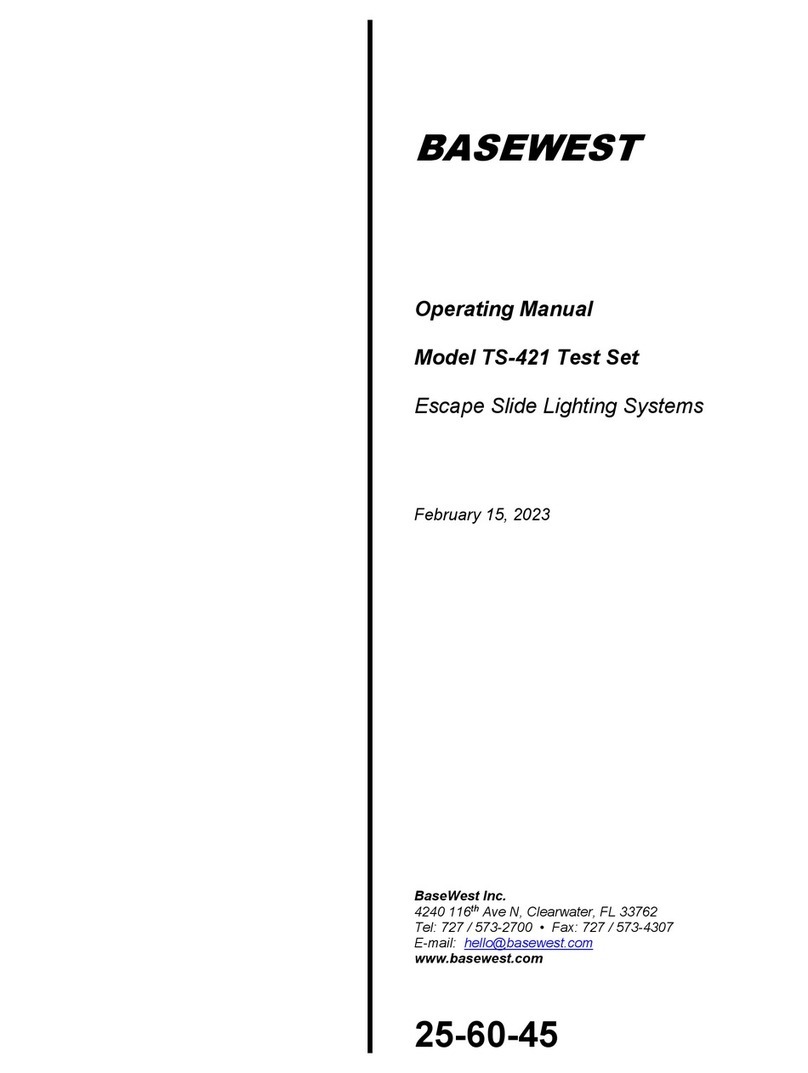
BASEWEST
BASEWEST TS-421 operating manual
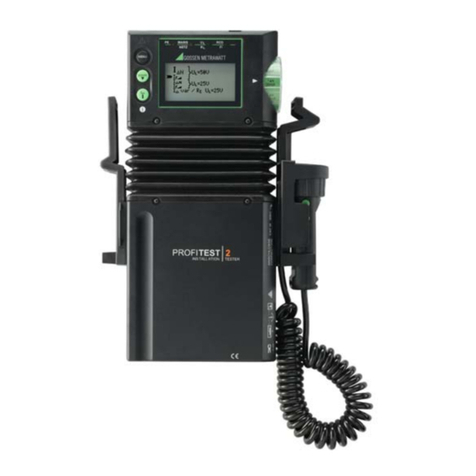
Gossen MetraWatt
Gossen MetraWatt PROFITEST 2 DIN VDE 0100 operating instructions
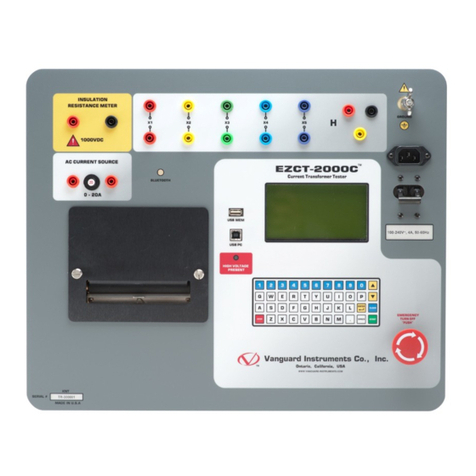
Vanguard Instruments Company
Vanguard Instruments Company EZCT-2000C user manual

Anite
Anite NEMO Walker Air quick guide
